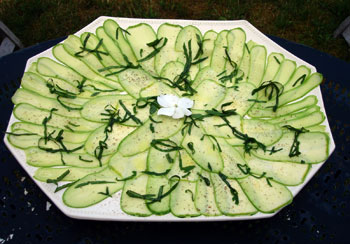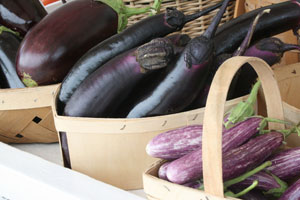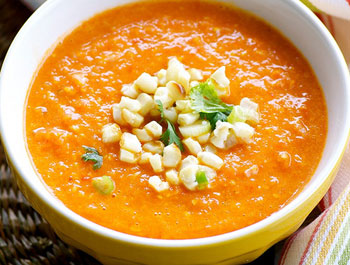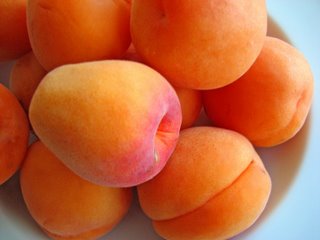 We eat a lot of salads at La Touche, my father’s country house in the Loire which he shares with a couple of long time friends. Lunch typically consists of several salads, a panier of bread, and a substantial wedge of cheese. It is a meal large enough to satiate an afternoon hunger but is not overly filling because there is rarely meat served unless it is reheated from the night before. A main reason for the plethora of salads is the summer surplus of garden produce including the aforementioned courgettes de nice, tomatoes, potatoes, and haricots verts.
We eat a lot of salads at La Touche, my father’s country house in the Loire which he shares with a couple of long time friends. Lunch typically consists of several salads, a panier of bread, and a substantial wedge of cheese. It is a meal large enough to satiate an afternoon hunger but is not overly filling because there is rarely meat served unless it is reheated from the night before. A main reason for the plethora of salads is the summer surplus of garden produce including the aforementioned courgettes de nice, tomatoes, potatoes, and haricots verts.
I wanted to do something creative with courgettes, the amazing little light green zucchinis, so I decided to make a carpaccio. Our kitchen is equipped with tons of culinary gadgets and the professional mandolin is one such toy perfect for cutting long translucent slices of zucchini. I arranged the slices on a large platter and dressed them a half hour before sitting down to lunch with lemon juice, olive oil, and sea salt. The brief marinating time gives the acidity in the sauce enough time to slightly breakdown the fibrous cells of the vegetable. I topped the zucchini with some shredded basil, a crack of black pepper, and a white impatient to dress up the presentation before we tucked in.

 There was a time when the closest I would get to an eggplant was at an Italian restaurant when rounds of it would be coated with a thick layer of breading and fried to crispness, then smothered in rich tomato sauce and lots of cheese. But even at that, I'd still run across some very distasteful eggplant.
There was a time when the closest I would get to an eggplant was at an Italian restaurant when rounds of it would be coated with a thick layer of breading and fried to crispness, then smothered in rich tomato sauce and lots of cheese. But even at that, I'd still run across some very distasteful eggplant. I woke up the other morning craving roasted red pepper soup. Not for breakfast -- that would be weird -- but for dinner.
I woke up the other morning craving roasted red pepper soup. Not for breakfast -- that would be weird -- but for dinner. In summers past, I grew yellow squash with great success. The plants spread to every inch of the garden, threatening to overwhelm tomato plants, the herb garden and a small patch of arugula. After the vines firmly established themselves, the long, fat squash seemed to appear overnight. What to do with all those squash?
In summers past, I grew yellow squash with great success. The plants spread to every inch of the garden, threatening to overwhelm tomato plants, the herb garden and a small patch of arugula. After the vines firmly established themselves, the long, fat squash seemed to appear overnight. What to do with all those squash? Do you know what happens when you buy a quart size container of fresh apricots? You get about 14 apricots that ripen at the same time (and about 2 that don't). As much as I love fresh apricots, eating 14 of them within a day or two isn't practical or appealing. Apricot muffins, however, are enormously appealing.
Do you know what happens when you buy a quart size container of fresh apricots? You get about 14 apricots that ripen at the same time (and about 2 that don't). As much as I love fresh apricots, eating 14 of them within a day or two isn't practical or appealing. Apricot muffins, however, are enormously appealing.